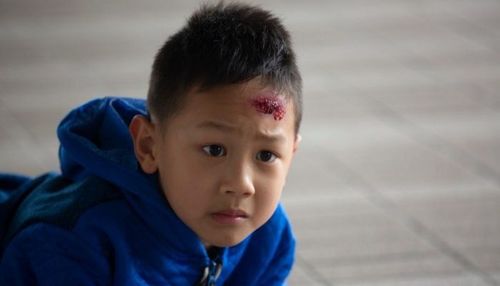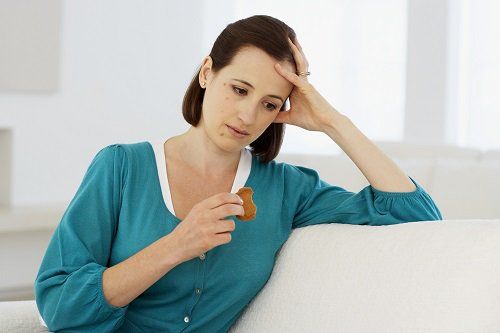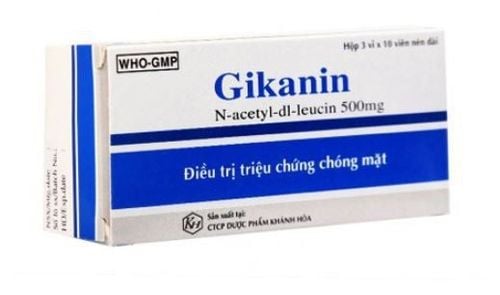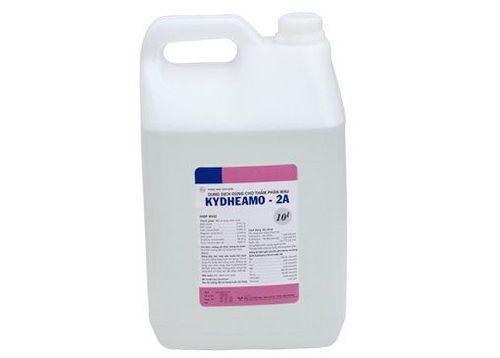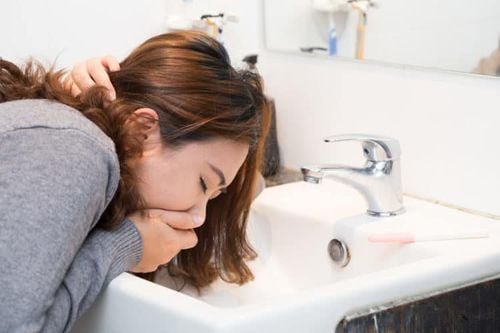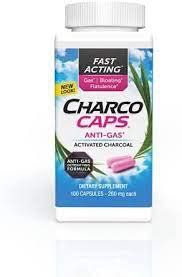This is an automatically translated article.
Most children are curious and want to explore the world around them with all their senses, including taste. As a result, the child's surroundings can be a dangerous place where he or she may be unknowingly exposed to hazardous substances. The degree of toxicity depends on the type of exposure, the nature and quantity of the poison.1. What is poisoning?
Poisoning is when cells are damaged or destroyed by a toxic substance that is inhaled, swallowed, injected, or absorbed by a patient.The main factors to predict the severity of poisoning are:
Nature, dose and formulation of the poison. Toxic exposure route. Copper exposure to other toxins. Nutritional status of the child (when the child is hungry or full). Age of the child. The child's pre-existing health status.
2. The most common agents associated with poisoning in children
There are many child poisoning agents that exist in the home and surroundings of children, but not everyone knows that they can cause poisoning in children. The most common agents associated with childhood poisoning include:Liquid nicotine: small amounts of liquid nicotine can be fatal to a child if swallowed or spilled on the skin. Liquid nicotine is commonly used to fill e-cigarettes. Over-the-counter drugs: such as Paracetamol, cough medicine, cold medicine, vitamins, iron, antihistamines, anti-inflammatory drugs,... Prescription drugs: such as antidepressants, pain relievers,... Products household products such as: bleach, disinfectant, detergent, cosmetic,... Kerosene, gasoline, engine oil, furniture polish, paint thinner. Pesticides include: insecticides, rodenticides and herbicides. Alcohol. Drug. Poisonous plants. Animal or insect bites.
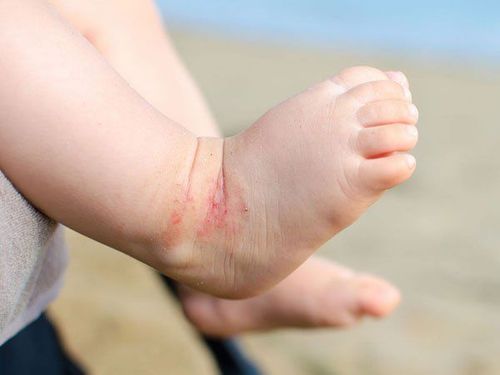
Côn trùng cắn cũng có thể là nguyên nhân gây ngộ độc ở trẻ
3. Risk factors for child poisoning
Young children are susceptible to poisoning from ingesting poisons, especially liquids, because they are very curious, putting most things in their mouths without knowing the consequences. Adolescents are more aware of the consequences of their actions. But they can be invited or forced by friends, leading to abuse of alcohol, drugs,... Therefore, the death rate from poisoning in adolescents is higher than in children. Young children are more susceptible to poisoning due to their smaller bodies, and most toxicity of most toxins is related to dose per kilogram of body weight. Boys have high rates of poisoning among girls in all regions of the world. Fatal and nonfatal poisonings are strongly associated with socioeconomic status. The prevalence of different types of poisoning in different parts of the world. This level depends on the speed of industrial development, agricultural activities, social culture. For example, medicines are the leading cause of nonfatal poisoning in children in high-income regions and countries. Meanwhile, the use of fuels such as kerosene is a common cause of poisoning among children in low-income regions and countries. Other poisoning risk factors include those related to the poisoning agent itself, including: toxicity, nature of the poison, appearance and storage of the poison, weather, policies, standards and regulations relating to the production, labeling, distribution, storage and disposal of toxic substances.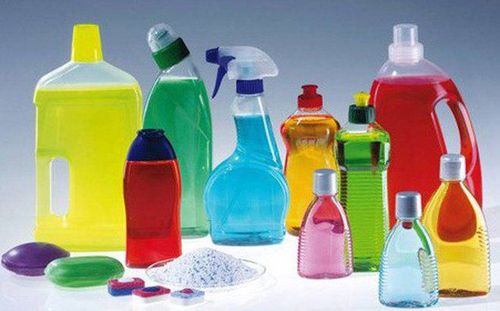
Trẻ nhỏ dễ bị ngộ độc do ăn phải chất độc, đặc biệt là chất lỏng, vì chúng rất tò mò, đưa hầu hết các thứ vào miệng mà không biết trước hậu quả
4. What to do when children are exposed to poison?
When detecting children exposed to poison, you should take them to medical facilities immediately. Call 911 right away if your child has any of the following symptoms:Difficulty breathing. Severe sore throat. Burns on lips or mouth. Convulsions. Loss of awareness. Extreme sleepiness. If your child doesn't have any of the severe symptoms listed above, you can take him or her to your local poison control center. Don't assume your child is fine, as some dangerous substances will not cause an immediate reaction.
When visiting the local hospital or health center, the health care provider will need information about the child and the poison the child was exposed to, so be prepared to answer some of the following questions:
Information about the child: Your child's age Your child's weight Time exposed to the poison Your address or location: in case you call 911. Any medical conditions your child has. All medications your child is taking. Toxicology Information: Ingredients of the poison: if you have a container of the poison (drugs, household products, etc.), bring it with you or take a photo to read the ingredients listed on label for doctor. Description: if your child has swallowed something that looks like a part of a plant, describe it as fully as possible. If your child has been bitten by a snake, and you do not know the name of the snake, you need to describe in detail the shape and color so that the doctor can find out what kind of snake it is. Amount: if your child is poisoned by prescription or over-the-counter drugs, you need to estimate the maximum number of pills your child has swallowed by subtracting any pills from the original quantity. which drugs you can calculate.
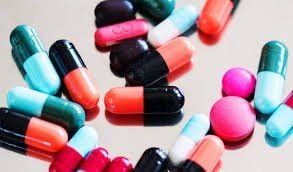
Nếu con bạn bị ngộ độc bởi các loại thuốc kê đơn hoặc thuốc không kê đơn, bạn cần phải ước tính số viên thuốc tối đa mà con bạn đã nuốt phải
5. Things to do at home when a child is poisoned
When detecting that a child has been poisoned, it is necessary to call an ambulance immediately, and at the same time, it is necessary to take some first aid measures to help reduce the level of poisoning of the child, depending on the way of exposure to the poison.5.1. What to do when a child swallows something poisonous? When you find out that your child has swallowed something poisonous, you need to do the following immediately:
Take the remains of whatever your child has swallowed. Try to get your child to spit out whatever is left in the mouth. Keep a sample or leftovers in the box (if any) in case a toxicology needs to be determined. So should you try to make your baby vomit? The answer is no. If your child has swallowed a strong acid, such as a toilet bowl cleaner, or a strong alkali, such as a drain or oven cleaner, vomiting can further injure your child. back up the child's throat and mouth.
5.2. What to do when a child has poison on the skin? When detecting that a child has poison on their skin, you should immediately do the following:
Take off contaminated clothing. Rinse the exposed skin area with warm water. If skin burns, continue rinsing for at least 15 minutes. Call 911 or poison control for further advice. 5.3. What to do when a child is shot with poison in the eye? When detecting that a child has poisoned his eyes, you should immediately do the following:
Immediately rinse eyes with warm water for 15 minutes by pouring warm water gently into the inner corner of the eye. Try to keep the eyelids open or let your child blink. If your child splashes poison on other body parts, take him to the bathroom. After rinsing your eyes, call a poison control center. 5.4. What to do when children are exposed to toxic fumes? When you detect that your child has been exposed to toxic fumes, you need to get your child into fresh air as quickly as possible. If your child doesn't seem to be affected by toxic fumes, talk to your doctor about what to do next.
If your child is exposed to toxic fumes then stops breathing, you need someone to call 911 immediately and start CPR. If you are alone, perform CPR for two minutes first, then call 911.
Common sources of toxic smoke include:
Smoke from cars and motorbikes in closed garages. Air outlet Wood stove Gas heater, oven, stove or water heater.
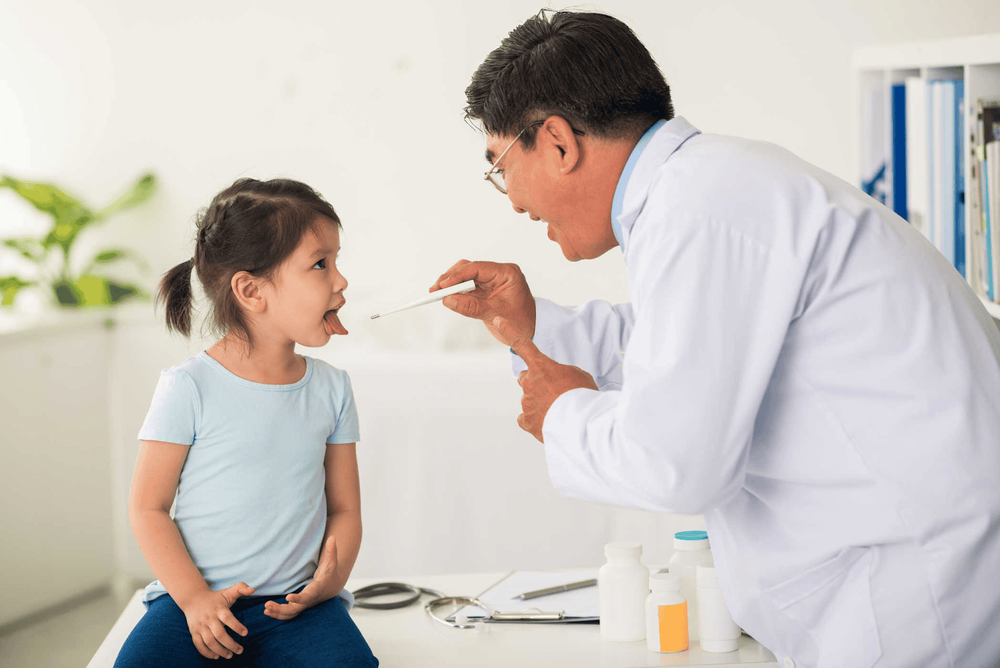
Nếu con bạn dường như không bị ảnh hưởng bởi khói độc, bạn hãy trao đổi với bác sĩ xem bạn cần phải làm gì tiếp theo
If exposed to carbon monoxide, children will show signs of poisoning before adults. The initial symptoms are:
Headache Dizziness Drowsiness If exposure to carbon monoxide continues, the child will develop the following additional symptoms:
Nausea Vomiting Heart palpitations Consciousness Acute poisoning Children are still a matter of public health concern. This is a common cause of children being hospitalized in the emergency room. The way you respond initially can directly affect the extent of damage after your child is exposed to a poison. Therefore, equip yourself with the necessary knowledge to be able to handle it promptly, reducing the damage caused by poisoning to your child.
As a key area of Vinmec Health system, Pediatrics Department always brings satisfaction to customers and is highly appreciated by industry experts with:
Gathering a team of top doctors and nurses in Pediatrics : consists of leading experts with high professional qualifications (professors, associate professors, doctorates, masters), experienced, worked at major hospitals such as Bach Mai, 108.. Doctors All doctors are well-trained, professional, conscientious, knowledgeable about young psychology. In addition to domestic pediatric specialists, the Department of Pediatrics also has the participation of foreign experts (Japan, Singapore, Australia, USA) who are always pioneers in applying the latest and most effective treatment regimens. . Comprehensive services: In the field of Pediatrics, Vinmec provides a series of continuous medical examination and treatment services from Newborn to Pediatric and Vaccine,... according to international standards to help parents take care of their baby's health from birth to childhood. from birth to adulthood Specialized techniques: Vinmec has successfully deployed many specialized techniques to make the treatment of difficult diseases in Pediatrics more effective: neurosurgery - skull surgery, stem cell transplantation. blood in cancer treatment. Professional care: In addition to understanding children's psychology, Vinmec also pays special attention to the children's play space, helping them to have fun and get used to the hospital's environment, cooperate in treatment, improve the efficiency of medical treatment. If you have a need for medical examination with experienced pediatricians at Vinmec, please make an appointment on the website to be served.
Please dial HOTLINE for more information or register for an appointment HERE. Download MyVinmec app to make appointments faster and to manage your bookings easily.
Reference sources: babycenter.com, who.int



